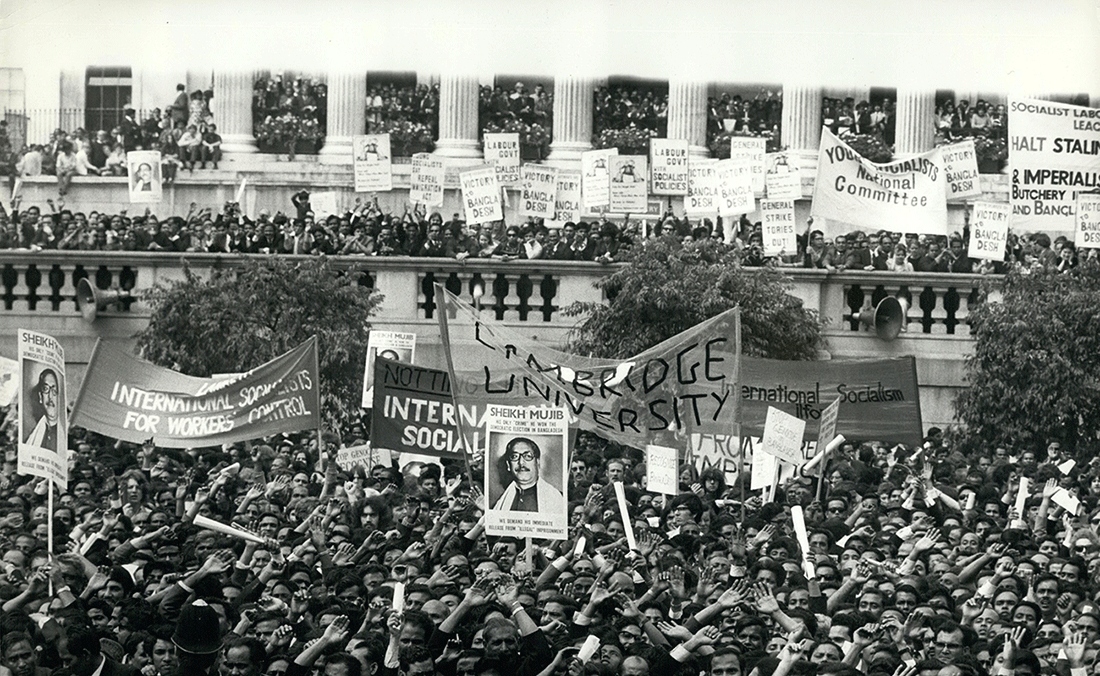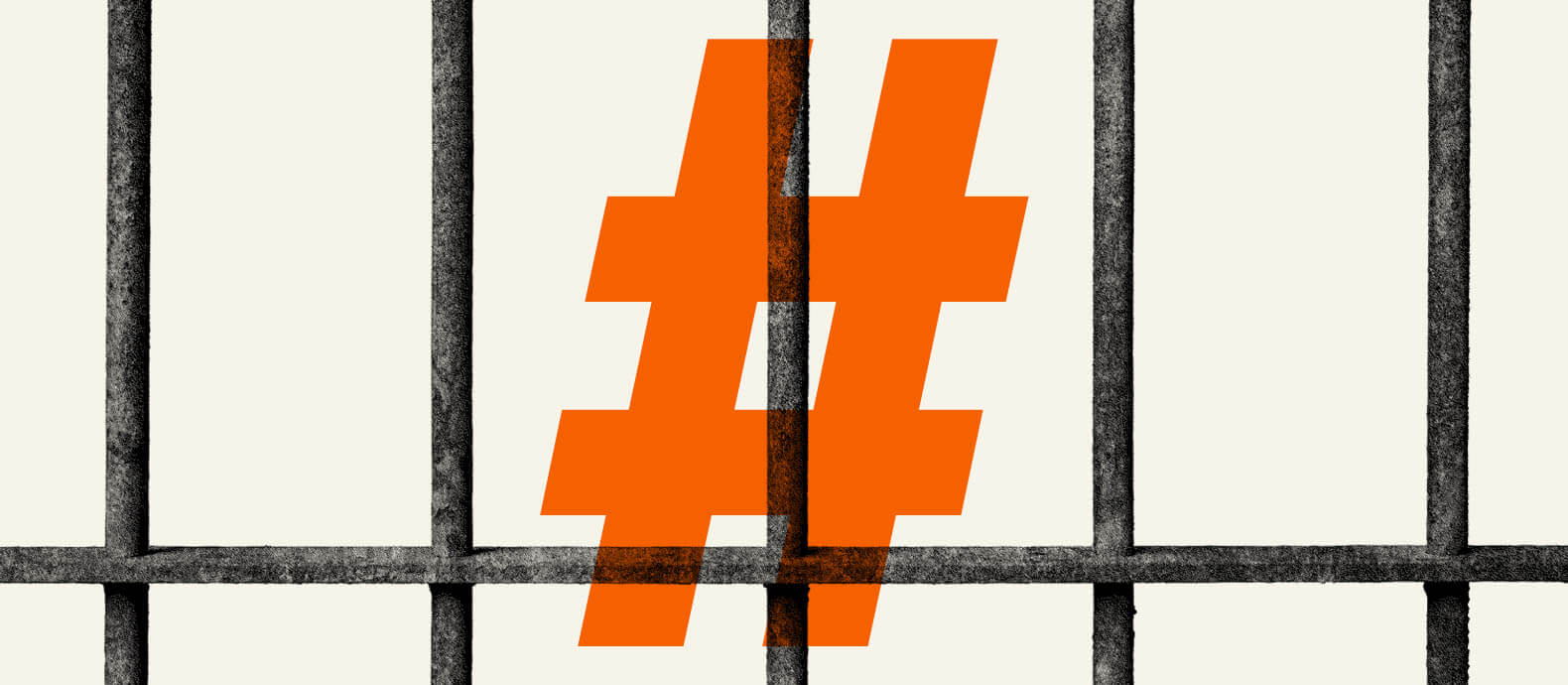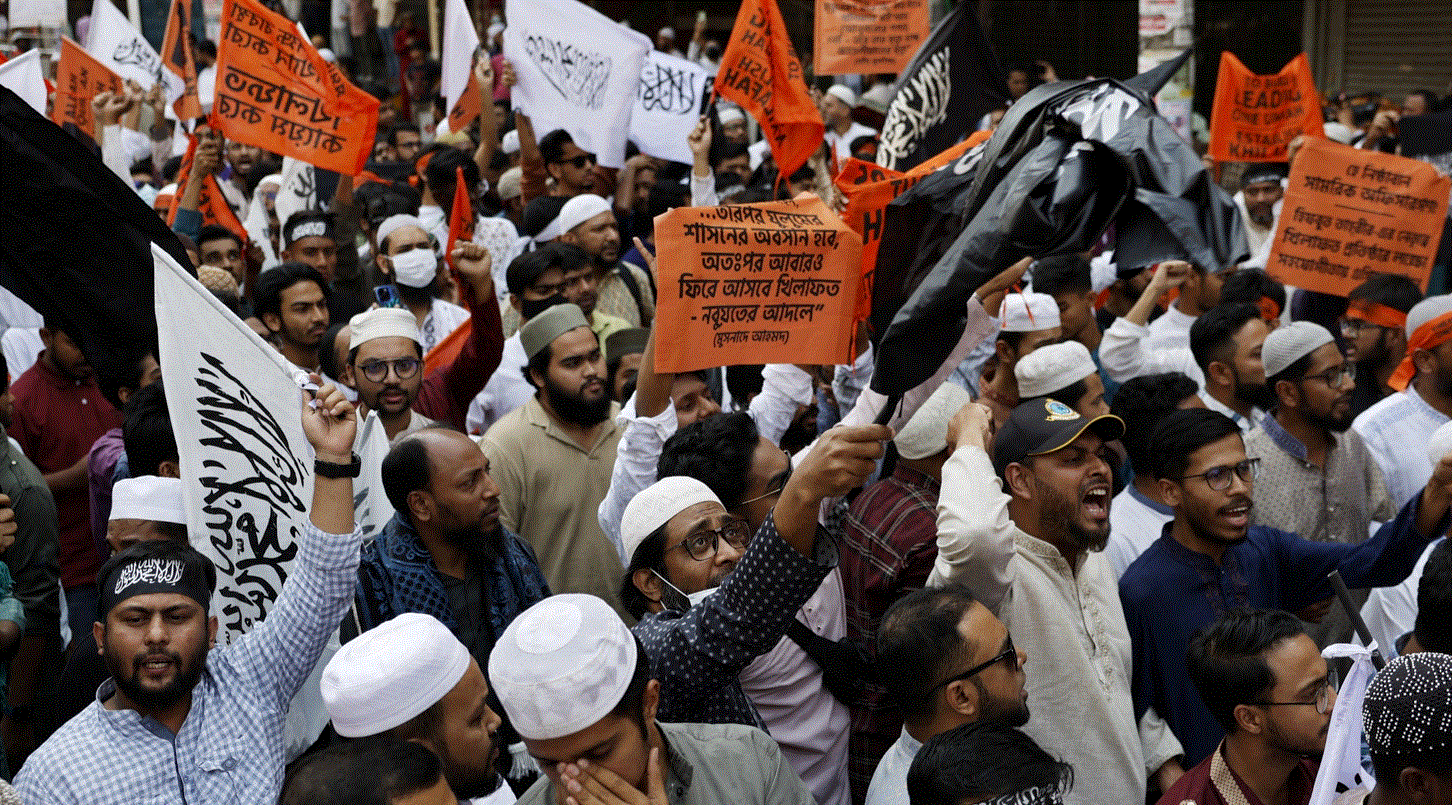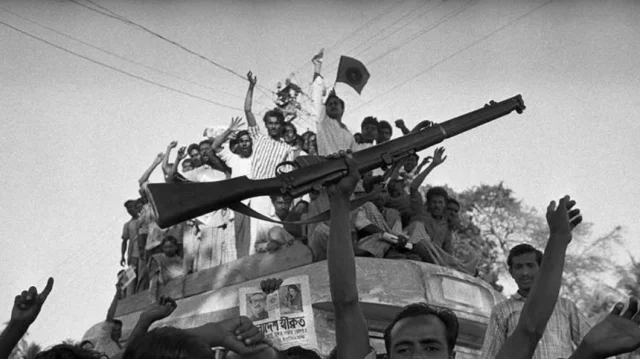In an era where change is broadcast live and justice is hashtagged, Generation Z has…

From Red Roses To Red Flags: How The ‘Lalbadar Uprising’ Turned 1971’s Legacy Into A Parody
In a provocative and misleading statement, interim advisor Mahfuz Alam claimed that the non-cooperation movement of 1971, the Agartala Conspiracy, and the Bengali-Bihari conflict were all outcomes of a ‘meticulous design’—just like the so-called 2024 uprising. This argument seeks to equate Bangladesh’s glorious Liberation War with a secret elitist fundamentalist conspiracy. But the reality is: the two events are entirely different in morality, legitimacy, and purpose.
In this article, we will present our views in response to the key points mentioned by Mahfuz Alam and demonstrate that Mr. Mahfuz is comparing apples with oranges; his remarks reflect an ahistorical review and an irrational narrative of imposed authority. He has forgotten that the purpose of our Liberation War was to achieve an independent nation, whereas their purpose is to justify the role of Razakars and Al-Badr during our independence by offering a neo-Pakistani narrative. Hence, the two cannot stand on the same plane—one is built on the blood of three million martyrs and the dignity of two hundred thousand mothers and sisters; the other involves conspiratorial killings, police assassinations, targeted attacks on minorities and Awami League activists, and cultivation of mobocracy.
Below is our response to the issues raised by Mahfuz.
The 1971 Liberation War: A Struggle for Survival and Sovereignty
The non-cooperation movement of March 1971 was a response to the betrayal of democratic elections by the Pakistani military regime. Despite winning the majority, the Awami League was denied its constitutional right to form a government. What followed was the largest peaceful civil disobedience movement in history, praised internationally (Sisson & Rose, 1990).
Although the Bengali-Bihari conflict was tragic, it was an isolated incident that the Pakistani army used as propaganda to justify launching Operation Searchlight. The Hamoodur Rahman Commission acknowledged these distortions (Hamoodur Rahman Commission Report, 2000), stating that the Pakistani junta and military policymakers had intentionally exaggerated the conflict for strategic use.
In contrast, the 2024 ‘uprising’ was neither democratic nor popular. It was a pre-planned elite conspiracy executed by unelected deep state representatives and radical militants, aided by digital mobs, judiciary and media–dismantling the constitutional process.
There is ample evidence for this. Several coordinators have admitted it. Moreover, an advisor to the current government confirmed that 7.62 mm bullets—found in victims’ bodies— were not issued to police. So where did they come from? Those leading the protests did not allow autopsies of the dead. Why? Because a large number of those killings were carried out by the protesters themselves, backed by external forces with sophisticated arms and ammunition.
In light of these events, we invoke Jean-Paul Sartre’s (2007) theory of ‘Authentic Revolt.’ The 1971 movement was a genuine response to existential oppression, thus an authentic revolt. The 2024 mobs were a drama staged by fundamentalist elites, lacking any historical necessity or democratic foundation. It was, in fact, a ‘Deceived Uprising.’
The Agartala Conspiracy: Anti-colonial Planning, Not Power-Hunger
Mahfuz claimed that the Agartala Conspiracy is comparable to the meticulous design of 2024. Here, too, Mahfuz reveals his ahistorical stance. The Agartala Conspiracy was a historic response to West Pakistani repression. It was a struggle to establish the right to self-determination, not a conspiracy to overthrow the constitutional government of an independent country. Sheikh Mujibur Rahman and Tajuddin Ahmad used this visionary strategy to give birth to a new state.
Mahfuz Alam insults Bangladesh’s anti-colonial heritage by comparing this to the court-mediated and foreign-sponsored 2024 uprising. According to Gramsci’s theory of ‘Passive Revolution,’ Agartala was a genuine grassroots struggle. By contrast, 2024 was an elite-imposed realignment masked as a people’s movement. Its purpose was to establish a new fundamentalist, neo-Pakistani hegemony. This is proven by post-August 5 events: celebration of Jinnah’s birthday, attacks on symbols of independence, destruction of landmarks, talk of replacing the national anthem, and threats to rewrite the constitution. This is why we said Mahfuz is comparing apples to oranges.
Foreign Involvement: Then vs. Now
In 1971, India supported Bangladesh’s liberation after Pakistan launched a genocide. That role was reactive and humanitarian (Mascarenhas, 1971).
In contrast, Mahfuz denies foreign interference in 2024, although the reality is different. International NGOs, UN mediators, and donor-driven media covertly supported the installation of a technocratic regime. Dr. Yunus’s ties with George Soros and USAID mark this soft intervention.
Carl Schmitt’s ‘State of Exception’ helps explain how elites create crises to suspend constitutional frameworks and install emergency rule (Schmitt, 1985). Today, we see this fully in action. The deep state wants to override our blood-earned constitution and replace it with a neo-Pakistani framework. The current government is already advancing corridor, port, and island deals—moves that were not possible under Prime Minister Sheikh Hasina, hence her removal.
Mobocracy vs. Monitory Democracy
In 1971, we achieved a form of monitory democracy. But 2024 has given us mobocracy. John Keane defines monitory democracy as a structure in which civil society monitors the state peacefully and legally (Keane, 2009).
Examples from 1971–72 Bangladesh:
- A grassroots non-cooperation movement led by Bangabandhu birthed the Republic.
- The 1972 Constitution enshrined nationalism, socialism, democracy, and secularism.
- Citizens could elect representatives and enjoy freedom of expression.
But mobocracy is where loud mobs and violence determine power, not law.
Examples from 2024:
- Courts, digital mobs, and media removed an elected government.
- Attacks on women, minorities, and pro-liberation artists and journalists.
- Demands to rewrite the constitution based on religious ideology.
Hannah Arendt’s concept of the “banality of evil” (2006) explains that when violence is carried out in the name of justice, it transforms individuals into guiltless killers (Arendt, 2006). In today’s Bangladesh, those who mobilize mobs to torture others operate under the grip of this “banality” or one-dimensional thinking. It resembles what we might call the Eichmann Syndrome in Germany, where members of Hitler’s Gestapo or Nazi officials under Eichmann performed their tasks without question. As Arendt’s ‘banality of evil’ describes, when violence is framed as justice, people lose guilt and become tools of oppression (Arendt, 2006). Today’s mobs resemble Eichmann-era Gestapo thugs, not the citizens of a liberated democracy. The same pattern of thinking drives those who form mobs in Bangladesh today and commit violence. To them, it’s nothing serious—they are just ‘following orders.’ Such people cannot, under any circumstances, be compared to the free citizens of a liberated Bangladesh.
The Conspiracy to Destroy the 1972 Constitution
The actual goal behind the 2024 uprising is now clear: to dismantle the 1972 Constitution and replace it with a majoritarian, religious framework. This would erase secularism and the legacy of the Liberation War.
According to Bourdieu’s theory of ‘symbolic violence,’ such rewrites suppress national identity by forcibly reinterpreting legal and cultural norms (Bourdieu, 1991).
The US Deep State’s Preference for Extremists
Case comparisons:
- Afghanistan: Mujahideen → Al-Qaeda (Coll, 2004)
- Syria: Al-Nusra rebels → ISIS (Hersh, 2014)
- Libya: Islamist militias → Failed state (Cockburn, 2015)
- Iran: MEK (terror group) → Used by US (Carothers, 1999)
- Bangladesh: Technocrat-Islamist alliance (2024) → Anti-liberation rollback
The pattern is clear: The US Deep State prefers obedient extremists to independent democrats. As Galtung’s Dependency Theory explains, imperial powers use local proxies to control peripheral states (Galtung, 1971). Bangladesh’s 2024 coup is part of this colonial playbook.
The ‘Red’ Uprising and the Mockery of Colour Revolutions
The 2024 ‘Red Uprising’ or ‘Lalbadar’ mimics global colour revolutions. But where Rose and Orange Revolutions aimed for democracy, this red wave seeks to destroy secularism and pluralism.
Comparison flow chart:
– Rose (Georgia): Anti-authoritarian → Red (BD): Fall of elected govt
– Orange (Ukraine): Pro-democracy → Red (BD): NGO-judiciary coup
– Tulip (Kyrgyzstan): Youth-led → Red (BD): Right-wing student-elite mob
This so-called colour revolution is a rebranded authoritarian regression cloaked in the people’s rhetoric.
Final Words: Historical Parody or Political Fraud?
To compare the 1971 revolution to the 2024 mobocratic coup is not just a distortion of history—it is moral treason and strategic deception. One gave us freedom. The other seeks to destroy it. Accepting this narrative gives Pakistani ideological remnants the chance to rewrite our past.
The non-cooperation movement gave us Bangladesh. The 2024 conspiracy seeks to cover it in red and burn its soul.
Bibliography
- Arendt, H. (2006). Eichmann in Jerusalem: A report on the banality of evil. Penguin. Bourdieu, P. (1991). Language and symbolic power. Harvard University Press.
- Carothers, T. (1999). Aiding democracy abroad: The learning curve. Carnegie Endowment for International Peace. Cockburn, P. (2015). The rise of Islamic State: ISIS and the new Sunni revolution. Verso.
- Coll, S. (2004). Ghost Wars: The Secret History of the CIA, Afghanistan, and bin Laden. Penguin Press. Fair, C. C. (2014). Fighting to the end: The Pakistan Army’s way of war. Oxford University Press.
- Galtung, J. (1971). A structural theory of imperialism. Journal of Peace Research, 8(2), 81–117. Gramsci, A. (1971). Selections from the prison notebooks. International Publishers.
- Hamoodur Rahman Commission Report. (2000). Report of the War Enquiry Commission (Classified 1974, Declassified 2000). Government of Pakistan.
Hersh, S. (2014). The red line and the rat line. London Review of Books, 36(8), 21–24. Keane, J. (2009). The life and death of democracy. Simon & Schuster. - Mascarenhas, A. (1971, May 30). Genocide. The Sunday Times (London).
McFaul, M. (2005). Transitions from postcommunism. Journal of Democracy, 16(3), 5–19. Radnitz, S. (2006). What really happened in Kyrgyzstan? Journal of Democracy, 17(2), 132–146. Sartre, J.-P. (2007). Existentialism is a humanism. Yale University Press. - Schmitt, C. (1985). Political theology: Four chapters on the concept of sovereignty. University of Chicago Press.
- Sisson, R., & Rose, L. E. (1990). War and secession: Pakistan, India, and the creation of Bangladesh. University of California Press.
- Welt, C. (2003). Georgia’s rose revolution: From regime weakness to regime collapse. Peaceworks.
The author is a Professor at a University in, USA




Comments (0)